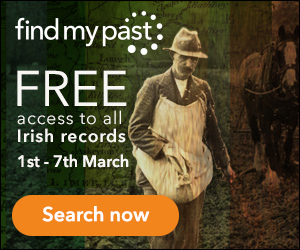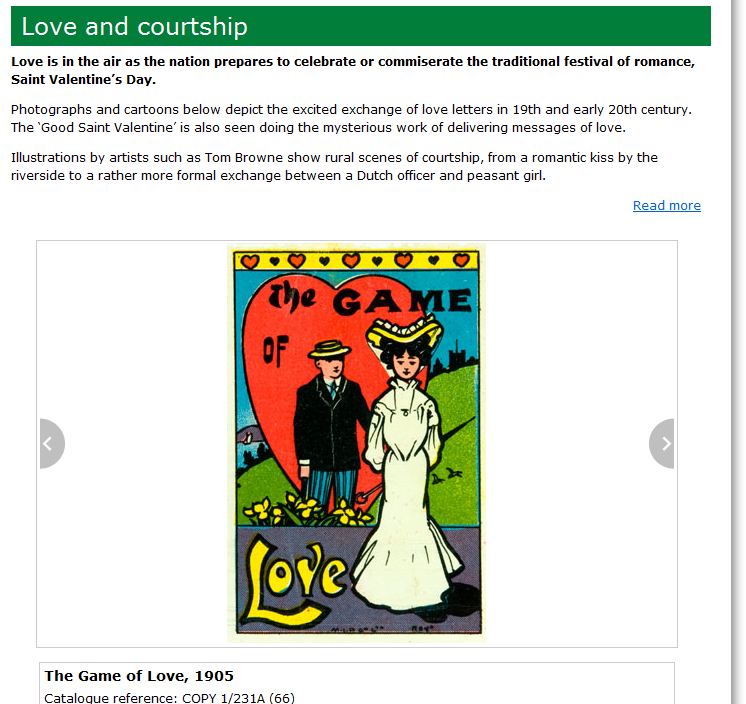by | Nov 2, 2015 | 01 What's New, British, Census, Findmypast, Records & databases
 The 1939 Register–the most comprehensive population survey EVER of England and Wales known–is finally searchable online!
The 1939 Register–the most comprehensive population survey EVER of England and Wales known–is finally searchable online!
Today FindMyPast, in association with the U.K.’s National Archive, has launched a digitized, searchable version of the 1939 Register. This major record set fills a major gap at a pivotal time in history.
“Anyone can now discover their family, their home and their community on the eve of WWII,” states a FindMyPast release. “Until now, the most recent information available was the 1911 census. Owing to the 100 year rule, the 1921 census will not be released until 2022, while the 1931 census was destroyed in the war and the 1941 census was never taken. The 1939 Register therefore bridges an important 30-year gap in history.”
“In September 1939, WWII had just broken out,” explains Findmypast. “65,000 enumerators were employed to visit every house in England and Wales to take stock of the civil population. The information that they recorded was used to issue Identity Cards, plan mass evacuations, establish rationing and co-ordinate other war-time provisions….
“Each record includes the names of inhabitants at each address, their date of birth, marital status and occupation….Comprising 1.2 million pages in 7,000 volumes and documenting the lives of 41 million people, the 1939 Register opens a window to a world on the brink of cataclysmic change.” Some of the records even include changes made clear up to 1991.

Additionally, Findmypast has added unique period photographs, infographics, regional newspaper articles and maps “personally tailored to each record.” They are promoting a “rich and unique user experience unrivaled by any other family history research tool to date.”
What about privacy concerns? This is a relatively recent record set: more recent than national censuses that DO have privacy restrictions on them. About 28 million records have been cleared of privacy restrictions. The remainder will remain temporary closed, “either because the individual recorded is still living and less than 100 years old or proof of death has not been verified….The Register will be updated weekly….Records will also be opened as people reach the age of 100 years+1 day.”
Interestingly, it appears individuals may have the ability to show proof of death to have records released: “Findmypast, working with The National Archives, will have an ongoing process to identify records which can be opened on proof of death provided either by matching against robust data sets or supplied by users.”
The Register is free to search on Findmypast. Charges apply to view the records, with discounts for subscribers and pay-per-view packages starting at £6.95.
More Research Gems for English Genealogy
 WWII Documents at the National Archive (U.K.)
WWII Documents at the National Archive (U.K.)
The Bombing of London: Check Out this Interactive Map of the Blitz
Findmypast Library Edition: Request it at Your Public Library!
by Lisa Cooke | Nov 26, 2013 | 01 What's New, British, Canadian, Family History Podcast, FamilySearch, NARA, Records & databases
 Originally published Fall 2008
Originally published Fall 2008
Republished November 26, 2013
by Lisa Louise Cooke
[display_podcast]
Download the Show Notes for this Episode
Family History: Genealogy Made Easy
Welcome to this step-by-step series for beginning genealogists—and more experienced ones who want to brush up or learn something new. I first ran this series in 2008. So many people have asked about it, I’m bringing it back in weekly segments.
Episode 8: Best Genealogy Websites, Part 2
In a follow up to last week’s episode about subscription genealogy records website, in my first segment our guest is Yvette Arts, Director of Content Partnerships at World Vital Records. She tells us about exciting developments at the website that have helped make it a success.
In our second segment we look at five organizations that provide free online access to genealogy records for those with North American roots: FamilySearch, the National Archives of the United States, Ellis Island Foundation, the National Archives of the United Kingdom, and Library and Archives Canada.
Now for some updates on these sites and MORE since the show first aired:
- FamilySearch.org is still free and growing exponentially. It captures records from all over the world, not just North America and the U.K. It is now home to over 3.5 billion names in searchable databases, with over 35 million new records added every month. In addition, they’ve added over 60,000 digital books to the site. The layout of the website has changed dramatically since I described it in the original show. Click on Search to get to their databases, then enter an ancestor’s name and, if you can, a life event (birth, marriage, residence or death). A significant portion of new online records are browsable but not yet indexed. So now, after you search for individuals in their databases, scroll down to the Browse section below the search fields. There you’ll be able to see what records you can browse for a locale (choose the international region, then you can choose more specific locations). You can still order microfilmed records at the Family History Library to a satellite FamilySearch library near you. From the Search screen, choose Catalog, and you can search for and order available records by location.
- The National Archives (U.S.), also known as the National Archives and Record Administration (NARA) also offers more on its website now. The portal for genealogists looks a little different now but still helps you see how to search and use the site for genealogy. There’s a direct link to the 1940 census, with images, maps and descriptions. Remember that Footnote, the subscription site I mentioned that’s digitizing military records, is now Fold3, which we talked about in Episode 7.
- EllisIsland.org still offers free access to the passenger records of those who landed at Ellis Island. In addition, you can still look at ship information (click on Ships from the home page). The Immigrant Experience and timeline I mention can be found by clicking on the Ellis Island tab.
- The National Archives (U.K.) links from the home page to resources for ordering birth, marriage and death certificates for England and Wales, Scotland and Northern Ireland. Read about updating order information, including costs, at these sites. There is still a portal for genealogists from which you can learn all about the various record groups I mention in the podcast and more.
- Library and Archives Canada continues to add more valuable genealogical data to its site, including census data! Start from its Genealogy and Family History page. In addition to the features I mention in the show, they’ve improved their online indexes: scroll down on the above page and you’ll find the Ancestors Search (Databases) link to a main search engine and individual databases for vital records, censuses, immigration, land, military and several directories.
- Cyndi’s List and U.S. GenWeb are still fantastic online resources, but add to your list these ones as well:
- DeadFred, a photo identifying and sharing site;
- Google, for searching across the Internet for everything from individual ancestor’s names to maps and local histories (especially through Google Books at www.books.google.com);
- The Library of Congress family of websites, including the mega-newspaper site, Chronicling America;
- WorldCat, an enormous card catalog for more than 10,000 libraries worldwide.
- Find a Grave and Billion Graves, home to cemetery inscriptions for millions of tombstones.
- Of course, there are many, many more websites for genealogists, but these will certainly keep you busy to start!
by Lisa Cooke | Feb 14, 2013 | 01 What's New, British, Holidays, Inspiration
 This weekend many of us will show love with chocolates, flowers, jewelry or–as my husband prefers–tools and Chinese takeout. Many of us will also turn to Hallmark or American Greetings for the perfect card.
This weekend many of us will show love with chocolates, flowers, jewelry or–as my husband prefers–tools and Chinese takeout. Many of us will also turn to Hallmark or American Greetings for the perfect card.
Our ancestors exchanged of love tokens at Valentine’s Day, too. Love letters, notes and even fancy gifts have passed between suitors for over 300 years. In England, many would-be lovers started sending pre-printed cards through the mail in the 1840s, when postage rates were standardized. In the United States, the practice became more popular after the Civil War, when thousands of soldiers-turned-beaus were looking for belles.
The National Archives (UK) has gathered a few virtual valentines in honor of the season. Browse images of old love letters, handmade and  commercially-printed cards, like this 1905 valentine with its bold primary colors. Maybe these will inspire your own expressions of love this season! Or maybe they will inspire you look more closely for the love stories in your family history and honor a romance that came before you.
commercially-printed cards, like this 1905 valentine with its bold primary colors. Maybe these will inspire your own expressions of love this season! Or maybe they will inspire you look more closely for the love stories in your family history and honor a romance that came before you.
 The 1939 Register–the most comprehensive population survey EVER of England and Wales known–is finally searchable online!
The 1939 Register–the most comprehensive population survey EVER of England and Wales known–is finally searchable online! WWII Documents at the National Archive (U.K.)
WWII Documents at the National Archive (U.K.)

 This weekend many of us will show love with chocolates, flowers, jewelry or–as my husband prefers–tools and Chinese takeout. Many of us will also turn to Hallmark or American Greetings for the perfect card.
This weekend many of us will show love with chocolates, flowers, jewelry or–as my husband prefers–tools and Chinese takeout. Many of us will also turn to Hallmark or American Greetings for the perfect card. commercially-printed cards, like this 1905 valentine with its bold primary colors. Maybe these will inspire your own expressions of love this season! Or maybe they will inspire you look more closely for the love stories in your family history and honor a romance that came before you.
commercially-printed cards, like this 1905 valentine with its bold primary colors. Maybe these will inspire your own expressions of love this season! Or maybe they will inspire you look more closely for the love stories in your family history and honor a romance that came before you.


